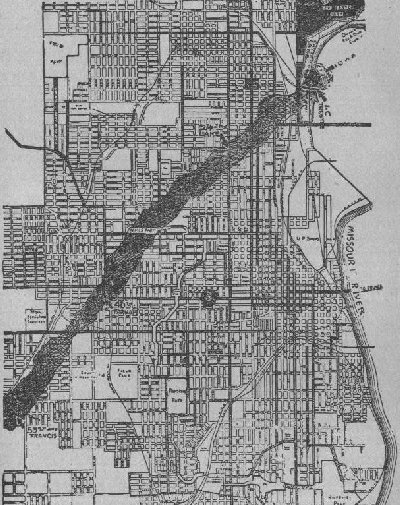
A series of cold fronts will bring heavy lake effect snow to the northern Great Lakes. The fronts will merge over the Ohio Valley and bring colder temperatures east of the Mississippi River later today into the end of the week. Additionally, wintry weather will develop over the Ohio Valley, Appalachians, and Northeast as rain switches over to snow tonight into Thursday morning. Read More >
.png) |
.jpg) |
| Photos of the Omaha Tornado on March 23, 1913, published in the book "Images of America: Omaha's Easter Tornadoes of 1913". The first photo (left) is at an unknown location. The second photo (right) is from the intersection of 38th and Arbor Streets. | |
Easter came early in 1913. March 23 was Easter Sunday, and the day promised spring-like weather. But spring in Nebraska is also tornado season, and the storm which brewed that Easter day proved to be one of the most deadly in our history. Cass and Saunders Counties were struck first. Thirty-eight people were killed in the town of Yutan, Mead, Berlin, Rock Bluffs, DeSoto, Nehawka, and Craig. It took the storm only 35 minutes to cover 40 miles of Nebraska.
By late afternoon, the storm system was headed for Omaha. It was a balmy spring day,with occasional glimpses of the sun and threatening of showers, developing into a heavy downpour of rain. There was little advance warning. Except a sharp fall of the barometer and temperature; it came and went within a few seconds, giving people scarcely time to get to their cellars.
The tornado hit Omaha at about 5:45 Sunday evening cutting a devastating 1/4 mile to 1/2 mile wide swath through the western and northern residential section of Omaha from two to six blocks wide and four and a half miles long.
It came from the southwest crossing the city diagonally striking the most densely populated residential areas, the poorer dwellings in the lowlands, and the most beautiful homes on the hills. The huge, fashionable residences of the denizens of West Farnam Hill suffered alike with the simple cottages of the West Side and the substantial homes of Bemis Park and northern Omaha. Crossing The twister turned south, crossing the Missouri River near the Illinois Central Railroad bridge into Council Bluffs.
In its wake was left a death list of 103 in the Omaha area alone. It destroyed 800 homes, wrecked another 2,000 homes with a total monetary loss of over $8,700,000 in the metropolis.
